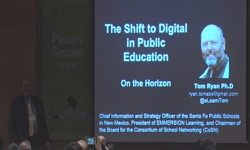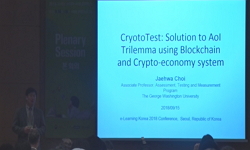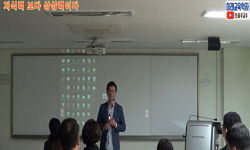The purpose of this study is to analyze the difference of interpretation level and intention to use message framing when autonomous vehicle, which is emerging as the product of 4th industrial revolution, is used as taxi, Interpretation level refers to...
http://chineseinput.net/에서 pinyin(병음)방식으로 중국어를 변환할 수 있습니다.
변환된 중국어를 복사하여 사용하시면 됩니다.
- 中文 을 입력하시려면 zhongwen을 입력하시고 space를누르시면됩니다.
- 北京 을 입력하시려면 beijing을 입력하시고 space를 누르시면 됩니다.
https://www.riss.kr/link?id=A105601850
- 저자
- 발행기관
- 학술지명
- 권호사항
-
발행연도
2018
-
작성언어
Korean
- 주제어
-
KDC
003
-
등재정보
KCI등재
-
자료형태
학술저널
- 발행기관 URL
-
수록면
135-155(21쪽)
-
KCI 피인용횟수
0
- 제공처
-
0
상세조회 -
0
다운로드
부가정보
다국어 초록 (Multilingual Abstract)
The purpose of this study is to analyze the difference of interpretation level and intention to use message framing when autonomous vehicle, which is emerging as the product of 4th industrial revolution, is used as taxi, Interpretation level refers to the interpretation of a product or service, assuming that it will happen in the near future or in the distant future. Message framing refers to the formation of positive or negative expressions or messages at the extremes of benefits and losses. In other words, previous studies interpret the value of a product or service differently according to these two concepts. The purpose of this study is to investigate whether there are differences in intention to use when two concepts are applied when an autonomous vehicle is launched as a taxi. The results are summarized as follows: First, the message format explaining the gain and why should be used when using the autonomous taxi in the message framing configuration, and the loss and how when the autonomous taxi is not used. Messages were constructed and compared. The two message framing differed (t = 3.063), and the message type describing the benefits and reasons showed a higher intention to use. In addition, the results according to interpretation level are summarized as follows. There was a difference in intentions to use when assuming that it would occur in the near future and in the near future with respect to the gain and loss, Respectively. In summary, in order to increase the intention of using autonomous taxis, it is concluded that messages should be given to people assuming positive messages (Gain) and what can happen in the distant future. In addition, this study will be able to utilize the research method in studying intention to use new technology. However, this study has the following limitations. First, it assumes message framing and time without user experience of autonomous taxi. This will be different from the actual experience of using an autonomous taxi in the future. Second, self-driving cars should technical progress is continuing, but laws and institutions must be established in order to commercialize it and build the infrastructure to operate the autonomous car. Considering this fact, the results of this study can not reflect a more realistic aspect. However, there is a practical limit to search for users with sufficient experience in new technologies such as autonomous vehicles. In fact, although the autonomous car to take advantage of the public transportation by taxi is now ready for the road infrastructure, and technical and legal public may not be willing to choose to not have enough knowledge to use the Autonomous cab. Therefore, the main purpose of this study is that by assuming that autonomous cars will be commercialized by taxi you can do to take advantage of the autonomous car, it is necessary to frame the message, why can most effectively be used to find how to deliver. In addition, the research methodology should be improved and future research should be done as follows. First, most students responded in this study. It is also true that it is difficult to generalize the hypotheses to be tested in this study. Therefore, in future studies, it would be reasonable to investigate the population of various distribution considering the age, area, occupation, education level, etc. Where autonomous taxi can be used rather than those who can drive. Second, it is desirable to construct various message framing of the questionnaire, but it is necessary to learn various message framing in advance and to prevent errors in response to the next message framing. Therefore, it is desirable to measure the message framing with a certain amount of time when the questionnaire is designed.
참고문헌 (Reference)
1 양윤, "해석수준, 메시지유형, 시간적 거리가 메시지 태도와 구매의도에 미치는 영향" 한국광고학회 23 (23): 151-172, 2012
2 양은지, "자율주행차 현황분석과 한국의 경쟁력 확보 전략" 국제문화기술진흥원 3 (3): 49-54, 2017
3 김민철, "시간적 거리와 행동정체성 수준에 따른 광고메시지 유형별 효과에 관한 연구:공인영어시험 광고를 중심으로" 한국광고학회 26 (26): 119-144, 2015
4 박재진, "공익광고의 메시지 프레이밍 효과 -해석수준이론을 중심으로-" 부산울산경남언론학회 17 (17): 63-87, 2013
5 Vallacher, Robin R., "What do people think they're doing? Action identification and human behavior" 94 (94): 3-,
6 Lee, B.Y., "Trends and Prospects of Automobile Technology Development in Domestic and Overseas" 33 (33): 10-16, 2016
7 Lee, J.H, "Traffic Distribution Technique to Avoid Bottleneck in Autonomous Vehicle Environment" 21 (21): 97-100, 2017
8 Liberman, Nira, "The role of feasibility and desirability considerations in near and distant future decisions: A test of temporal construal theory" 75 (75): 5-, 1998
9 Ban, M.Y., "Prospect of introduction of autonomous driving car and change of environment for traffic use" 300 : 1-25, 2017
10 Ryu, D.H., "Legislation and System Trends Related to Autonomous Vehicles in the United States" 42-44, 2016
1 양윤, "해석수준, 메시지유형, 시간적 거리가 메시지 태도와 구매의도에 미치는 영향" 한국광고학회 23 (23): 151-172, 2012
2 양은지, "자율주행차 현황분석과 한국의 경쟁력 확보 전략" 국제문화기술진흥원 3 (3): 49-54, 2017
3 김민철, "시간적 거리와 행동정체성 수준에 따른 광고메시지 유형별 효과에 관한 연구:공인영어시험 광고를 중심으로" 한국광고학회 26 (26): 119-144, 2015
4 박재진, "공익광고의 메시지 프레이밍 효과 -해석수준이론을 중심으로-" 부산울산경남언론학회 17 (17): 63-87, 2013
5 Vallacher, Robin R., "What do people think they're doing? Action identification and human behavior" 94 (94): 3-,
6 Lee, B.Y., "Trends and Prospects of Automobile Technology Development in Domestic and Overseas" 33 (33): 10-16, 2016
7 Lee, J.H, "Traffic Distribution Technique to Avoid Bottleneck in Autonomous Vehicle Environment" 21 (21): 97-100, 2017
8 Liberman, Nira, "The role of feasibility and desirability considerations in near and distant future decisions: A test of temporal construal theory" 75 (75): 5-, 1998
9 Ban, M.Y., "Prospect of introduction of autonomous driving car and change of environment for traffic use" 300 : 1-25, 2017
10 Ryu, D.H., "Legislation and System Trends Related to Autonomous Vehicles in the United States" 42-44, 2016
11 White, Katherine, "It's the mind-set that matters: The role of construal level and message framing in influencing consumer efficacy and conservation behaviors" 48 (48): 472-485, 2011
12 Gallagher, Kristel M., "Health message framing effects on attitudes, intentions, and behavior: a meta-analytic review" 43 (43): 101-116, 2011
13 Zacks, Jeffrey M., "Event structure in perception and conception" 127 (127): 3-, 2001
14 Moon, B.K., "Establishment of smart roads on national expressways by 2022 Early commercialization"
15 Ledgerwood, Alison, "Differential information use for near and distant decisions" 46 (46): 638-642, 2010
16 Lee, H.W, "Development of Compact Electric Vehicle Platform for Autonomous Driving" 763-768, 2017
17 Park, K.C., "A Study on Driver Experience for Autonomous Vehicles in 2030" 376-379, 2017
동일학술지(권/호) 다른 논문
-
Business Application of Convolutional Neural Networks for Apparel Classification Using Runway Image
- 한국지능정보시스템학회
- Yian Seo(서이안)
- 2018
- KCI등재
-
- 한국지능정보시스템학회
- 윌리엄(William Xiu Shun Wong)
- 2018
- KCI등재
-
Online Document Mining Approach to Predicting Crowdfunding Success
- 한국지능정보시스템학회
- Suhyeon Nam(남수현)
- 2018
- KCI등재
-
기업정보 기반 지능형 밸류체인 네트워크 시스템에 관한 연구
- 한국지능정보시스템학회
- 성태응(Tae-Eung Sung)
- 2018
- KCI등재
분석정보
인용정보 인용지수 설명보기
학술지 이력
| 연월일 | 이력구분 | 이력상세 | 등재구분 |
|---|---|---|---|
| 2027 | 평가예정 | 재인증평가 신청대상 (재인증) | |
| 2021-01-01 | 평가 | 등재학술지 유지 (재인증) |  |
| 2018-01-01 | 평가 | 등재학술지 유지 (등재유지) |  |
| 2015-03-25 | 학회명변경 | 영문명 : 미등록 -> Korea Intelligent Information Systems Society |  |
| 2015-03-17 | 학술지명변경 | 외국어명 : 미등록 -> Journal of Intelligence and Information Systems |  |
| 2015-01-01 | 평가 | 등재학술지 유지 (등재유지) |  |
| 2011-01-01 | 평가 | 등재학술지 유지 (등재유지) |  |
| 2009-01-01 | 평가 | 등재학술지 유지 (등재유지) |  |
| 2008-02-11 | 학술지명변경 | 한글명 : 한국지능정보시스템학회 논문지 -> 지능정보연구 |  |
| 2007-01-01 | 평가 | 등재학술지 유지 (등재유지) |  |
| 2004-01-01 | 평가 | 등재학술지 선정 (등재후보2차) |  |
| 2003-01-01 | 평가 | 등재후보 1차 PASS (등재후보1차) |  |
| 2001-07-01 | 평가 | 등재후보학술지 선정 (신규평가) |  |
학술지 인용정보
| 기준연도 | WOS-KCI 통합IF(2년) | KCIF(2년) | KCIF(3년) |
|---|---|---|---|
| 2016 | 1.51 | 1.51 | 1.99 |
| KCIF(4년) | KCIF(5년) | 중심성지수(3년) | 즉시성지수 |
| 1.78 | 1.54 | 2.674 | 0.38 |
연관 공개강의(KOCW)
-

4차 산업혁명 시대, 미래교육은 어떻게 준비하고 있고 어디로 가고 있는가?
한국교육학술정보원 Thomas Ryan(북미학교 네트워크 컨소시),Adrian Lim(싱가포르 정보통신국) -

4차 산업혁명 시대, 새로운 테크놀로지의 교육적 활용
한국교육학술정보원 최재화(조지 워싱턴 대학), Aaron Hor(Midwestern Higher Education Compact), Sung Hong(유데미) -

4차 산업혁명 기반기술을 활용한 비즈니스 혁명
K-MOOC 대전대학교 김용민 -

4차 산업혁명 기반기술을 활용한 비즈니스 혁명
K-MOOC 대전대학교 김용민 -

4차 산업혁명 시대는 지식력 보다 상상력이다(청운대학교)
신한대학교 신종우




 ScienceON
ScienceON DBpia
DBpia

